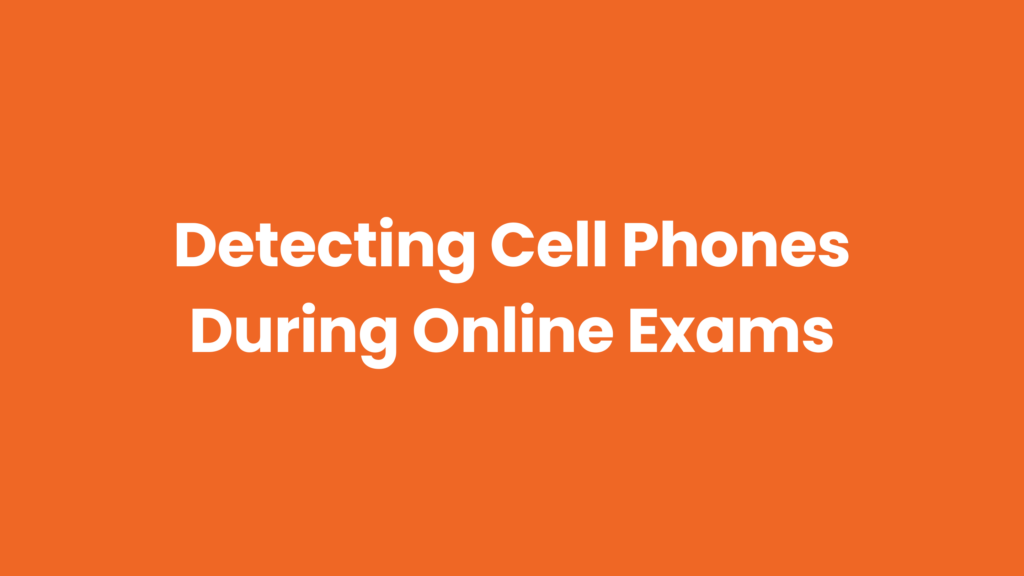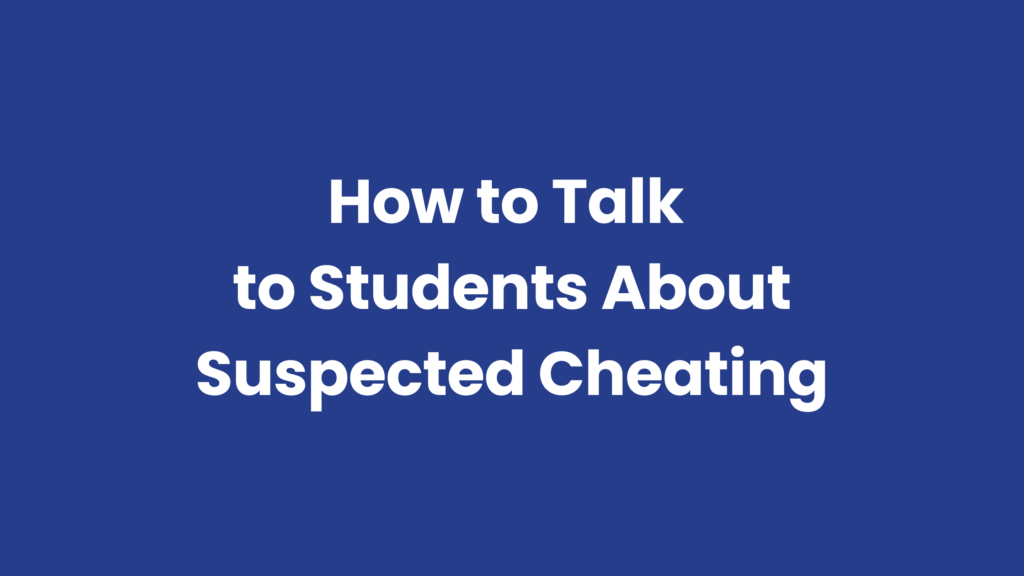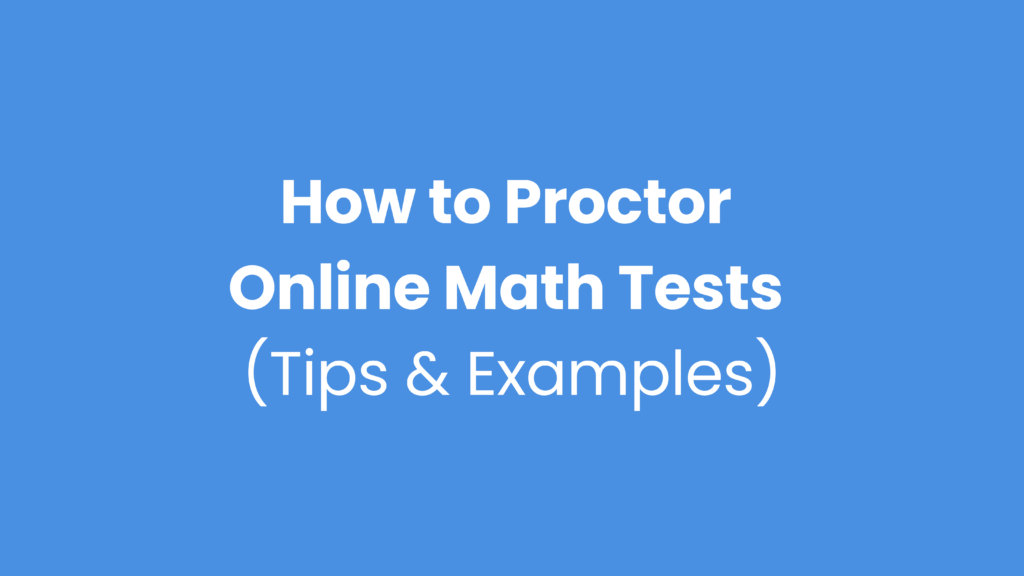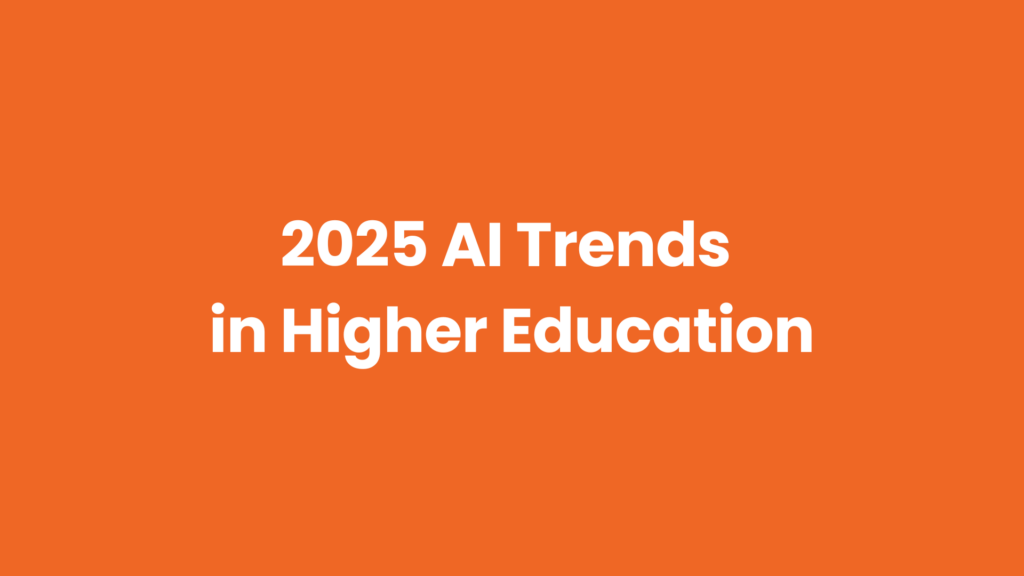Students cheat for all sorts of reasons beyond wanting better grades or just because they can, but what’s really fascinating is how they justify it. Understanding how students justify misconduct can help faculty get to the root of academic dishonesty. This article breaks down common mindsets and shares practical ways to address them before they lead to bigger issues, like a “cheating culture.”
5 ways students justify cheating
1. "Teeeeechnically, I didn’t cheat."
Some behaviors are unethical but not technically against the rules—and students know it.
On top of that, cheating may be unintentional because students don’t always realize that certain actions count as academic violations, especially because expectations vary across classes and disciplines (Waltzer & Dahl, 2023).
All of this blurs the line between what’s considered cheating and what’s simply unethical—and it’s been that way for years.
A student survey from 2010 about whether behaviors were cheating, unethical, or neither found predictable trends in students’ opinions but also highlighted inconsistencies that can make life difficult for educators.
Here are some interesting takeaways from the student survey:
96.4% believe copying exam answers is cheating, but only 73% think letting classmates copy your answers is cheating.
Nearly 40% say working with peers on an online exam without permission is cheating, while the other 60% are split between calling it unethical or not a problem at all.
Just over 9% think witnessing cheating without reporting it is cheating, almost 60% see it as unethical but not cheating, and about 30% say it’s neither.
See all survey stats
Cheating | Unethical (not cheating) | Neither | |
|---|---|---|---|
Copy classmates’ answers during an exam | 96.4% | 2.3% | 1.1% |
Witnessing cheating but not reporting it | 9.2% | 59.6% | 30.3% |
Allowing others to look at your answers during exams | 73.3% | 3.4% | 23.3% |
Working with peers on online exams without permission | 39.8% | 29% | 30.2% |
Asking classmates about exam questions before taking it | 26.7% | 45.6% | 26.6% |
Falsely claiming you submitted an assignment | 61.1% | 33% | 4.5% |
Copying homework from classmates | 72.9% | 22.6% | 3.9% |
Copying work from other students’ past assignments | 52.3% | 31.1% | 16% |
Storing answers/formulas in a calculator used in an exam | 74.5% | 15.6% | 9.8% |
How to help
Eliminate any wiggle room in your test rules and instructions
Writing clear, objective rules for tests and assignments helps reduce confusion and prevent academic dishonesty. The challenge is making them comprehensive enough to cover key details while keeping them concise—because what seems clear and straightforward often has just enough wiggle room for students to take advantage of.
Clearly define cheating
Give students a detailed definition of what you consider cheating, and talk through example situations. The example situations should be specific because broad examples are ineffective (Awosoga et al., 2021). This makes your definition more relatable and helps them better understand how it applies in real scenarios.
Regularly discuss integrity policies
It’s easy to assume that talking to students about academic integrity will go in one ear and out the other, but it can actually make a difference in reducing cheating in some situations (Malesky, 2022; Tatum & Schwartz, 2017).
That said, it should be just one small part of a larger strategy—it helps, but it’s not nearly enough on its own.
2. “Professors don’t seem to care when people cheat.”
Most faculty members believe academic integrity is important, and most realize it’s an issue in higher education (MacLeod & Eaton, 2020; Awosoga et al., 2021), but unfortunately, academic dishonesty is often unreported*.
Why is academic dishonesty underreported if it’s so important?
According to a few faculty surveys, academic dishonesty is underreported because it’s a slow process, evidence of cheating is rarely conclusive, and they have little faith that the institution will enforce consequences for cheating*.
Learn more about why faculty often avoid reporting cheating.
Some faculty survey responses indicated that the process took so long that they forgot the case details.
“When the feedback finally got back to me I’d actually forgotten what had happened… I thought oh jeez, yeah, I remember that now, that was a while ago.”
“I think it takes too long… It does take weeks sometimes for a decision to come back down.”
What happens if a school allows cheating?
If students believe faculty don’t care about cheating—or don’t care enough to address it—it can quickly become the norm, creating a culture where academic dishonesty is accepted and even expected (Tolman, 2017). And when that happens, academic misconduct happens more often, and each time it happens, students see it as a less serious offense (Shu et al., 2011).
How to help
Address cheating every time it happens
Talking to students about suspected cheating is awkward and stressful, but these conversations are important because addressing each instance of academic dishonesty helps decrease future cheating (Tatum & Schwartz, 2017)
These conversations don’t have to be as negative as they seem either. But what should you say? What shouldn’t you say? What evidence do you need? This guide to talking to students about cheating has everything you need.
Gather objective evidence from the proctoring software
A hybrid proctoring solution provides objective evidence—audio, video, images, clicks, and more—that can support misconduct cases. It offers clear, conclusive evidence that helps faculty and the teams involved in the reporting process.
Create a shared understanding of academic dishonesty among faculty
Universities should focus on faculty training on academic dishonesty to create awareness of school policies and a shared definition of what counts as misconduct. This is particularly important for newer faculty members to get acclimated and up to speed on integrity policies (Awosoga et al., 2021).
Improve the reporting process
Make it easier to report cheating by asking faculty and staff where the process gets stuck and how it can improve. Use their feedback to cut out unnecessary steps, add helpful tools like electronic forms or scheduling software, and create a system that supports everyone better.
*(Carpenter et al. 2010; MacLeod & Eaton, 2020; Staats et al., 2009)
3. “At work, they’d call it being resourceful, not cheating.”
A student survey by Cole et al. (2014) found that many justify academic dishonesty, like using internet resources or sharing answers during online exams, by arguing that they’ll be able to do it in the workplace.
This rationale also influences students’ prioritization of grades over learning, as one survey response explained: “When you get to the workplace, they teach you what you want to know, your diploma is just your foot in the door for the most part.” (Cole et al., 2014, p. 43).
How to help
Create an understanding of the practical importance of the coursework
Faculty need to show why the learning material and activities matter in real life to help students understand the importance and why they should care about it. When students feel they’re learning for themselves, especially when it’s practical information they’ll use in the future, they’re much less likely to cheat (Anderman & Won, 2018; Carpenter et al., 2010).
4. “I was paraphrasing, not plagiarizing.”
Sometimes, students knowingly plagiarize because they see it as a way to save time—especially when they don’t care about the subject or think it’s relevant to their futures (Moss, 2018).
Others may not even realize they’re plagiarizing, like the 70% of students who believe internet resources are public information that doesn’t need to be cited (Larkin & Mintu-Wimsatt, 2015). Students can also unintentionally plagiarize when they’re trying reeeeeally hard to sound overly academic, which is a struggle that some doctoral students face (Fatemi & Saito, 2020).
“Plagiarism can be particularly difficult for students to perceive. The lines between plagiarism and appropriate paraphrasing are often blurry, which can generate considerable disagreement among students and instructors about what constitutes plagiarism.” (Waltzer & Dahl, 2023, p. 131)
How to help
Explain what plagiarism is and show them how to cite
APA or MLA? Chicago, maybe? When do you need to cite a source? What counts as common knowledge? Questions like these can make plagiarism feel confusing, especially with all the gray areas. Make it easier for students by providing helpful resources in the course and teaching them how to cite properly.
Find a way to tie it to their future
Tie written assignments to students’ future work when you can. This can be challenging when teaching students who are taking the course as an elective, not out of interest.
For example, if a business administration major is in an art history class, offer flexibility to write a plan for a profitable art gallery business. While this kind of flexibility isn’t always realistic, even small connections to their future goals can make a difference.
Proctor wrriten assignments like an exam
Long and short-form written assignments can be proctored just like online exams.
During proctored written assignments, students WON’T be able to:
- Access unauthorized websites, applications, and extensions (including chatbots) unless faculty permit access to them (e.g., allowing students to visit specific articles and case studies.
- Use their cell phones to look up information.
- Use books or notes unless approved by the instructor.
- Paste content into the word processor that was copied before the assignment started.
- Ask voice assistants like Siri or Alexa for help.
Provide extra help resources
Share links to helpful citation resources at your institution, like the writing center, and from reliable citation websites.
5. "I was so anxious."
Tests are inherently stressful; the more anxious a student gets, the more likely they are to cheat (Eshet et al., 2024). Test anxiety and the fear of failing the test make cheating hard to resist, even for students who typically wouldn’t cheat (Eshet et al., 2024; Salgado et al., 2022).
How to help
Offer practice exams
Offering practice exams gives students a chance to familiarize themselves with the testing platforms and check to make sure their device meets the minimum system requirements.
Provide information about available accommodations
Talk to students about accommodations, like extended time or assistive technologies, and how to request them or get help if they need it.
Discuss exam details
Give students a clear idea of what the test will cover, its format, the types of questions, time limit, etc.
Knowing how and why cheating happens is important for educators to be proactive against academic dishonesty and create a culture of honesty and fairness. Hybid online proctoring supports this effort by helping detect and prevent dishonest behavior so educators can focus on teaching.
References
Anderman, E. M., & Won, S. (2019). Academic Cheating in Disliked Classes. Ethics & Behavior, 29(1), 1–22. https://doi.org/10.1080/10508422.2017.1373648
Awosoga, O., Nord, C. M., Varsanyi, S., Barley, R., & Meadows, J. (2021). Student and faculty perceptions of, and experiences with, academic dishonesty at a medium-sized Canadian university. International Journal for Educational Integrity, 17(1), 1–26. https://doi.org/10.1007/s40979-021-00090-w
Carpenter, D. D., Harding, T. S., & Finelli, C. J. (n.d.). Using Research to Identify Academic Dishonesty Deterrents Among Engineering Undergraduates.
Cole, M. T., Swartz, L. B., & Shelley, D. J. (2014). Students’ Use of Technology in Learning Course Material: Is it Cheating? International Journal of Information and Communication Technology Education, 10(1), 35–48. https://doi.org/10.4018/ijicte.2014010104
Eshet, Y., Grinautsky, K., & Steinberger, P. (2024). To behave or not (un)ethically? The meditative effect of mindfulness on statistics anxiety and academic dishonesty moderated by risk aversion. International Journal for Educational Integrity, 20(1), 6–18. https://doi.org/10.1007/s40979-024-00151-w
Fatemi G., Saito E. (2020) Unintentional plagiarism and academic integrity: the challenges and needs of postgraduate international students in Australia. J Furth High Educ 44(10):1305–1319. https://doi.org/10.1080/0309877X.2019.1683521
Larkin, C., & Mintu-Wimsatt, A. (2015). Comparing cheating behaviors among graduate and undergraduate online business students. Journal of Higher Education Theory and Practice, 15(7), 54–62.
MacLeod, P. D., & Eaton, S. E. (2020). The Paradox of Faculty Attitudes toward Student Violations of Academic Integrity. Journal of Academic Ethics, 18(4), 347–362. https://doi.org/10.1007/s10805-020-09363-4
Malesky, A., Grist, C., Poovey, K., & Dennis, N. (2022). The Effects of Peer Influence, Honor Codes, and Personality Traits on Cheating Behavior in a University Setting. Ethics & Behavior, 32(1), 12–21. https://doi.org/10.1080/10508422.2020.1869006
Moss, S. A., White, B., & Lee, J. (2018). A Systematic Review Into the Psychological Causes and Correlates of Plagiarism. Ethics & Behavior, 28(4), 261–283. https://doi.org/10.1080/10508422.2017.1341837
Salgado, J. F., Cuadrado, D., & Moscoso, S. (2022). Counterproductive Academic Behaviors and Academic Performance: A Meta-Analysis and a Path Analysis Model. Frontiers in Psychology, 13, 893775–893775. https://doi.org/10.3389/fpsyg.2022.893775
Shu, L. L., Gino, F., & Bazerman, M. H. (2011). Dishonest deed, clear conscience: When cheating leads to moral disengagement and motivated forgetting. Personality and Social Psychology Bulletin, 37(3), 330–349. https://doi.org/10.1177/0146167211398138
Staats, S., Hupp, J. M., Wallace, H., & Gresley, J. (2009). Heroes Don’t Cheat: An Examination of Academic Dishonesty and Students’ Views on Why Professors Don’t Report Cheating. Ethics & Behavior, 19(3), 171–183. https://doi.org/10.1080/10508420802623716
Tatum, H., & Schwartz, B. M. (2017). Honor Codes: Evidence Based Strategies for Improving Academic Integrity. Theory into Practice, 56(2), 129–135. https://doi.org/10.1080/00405841.2017.1308175
Tolman, S. (2017). Academic Dishonesty in Online Courses: Considerations for Graduate Preparatory Programs in Higher Education. College Student Journal, 51(4), 579–584.
Waltzer, T., & Dahl, A. (2023). Why do students cheat? Perceptions, evaluations, and motivations. Ethics & Behavior, 33(2), 130–150. https://doi.org/10.1080/10508422.2022.2026775
our blog







